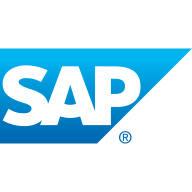

Tableau and SAP Analytics Cloud compete in the business intelligence and analytics domain. Based on features and capabilities, Tableau holds the upper hand in visualization, while SAP Analytics Cloud excels in predictive analytics and planning.
Features: Tableau provides a wide array of graphical representations and superb integration with diverse data sources, making it an excellent tool for data visualization. Its intuitive drag-and-drop interface enhances user experience, allowing users to create versatile visualizations easily. SAP Analytics Cloud offers robust predictive analytics and strategic planning capabilities, integrating AI-driven insights into its ecosystem and providing seamless connection within SAP environments, which is advantageous for SAP users.
Room for Improvement: Tableau requires improvements in handling large datasets, more advanced ETL functions, and seamless integration for enterprise use. The pricing is also a concern, requiring better predictive analytics and real-time data handling. SAP Analytics Cloud could benefit from enhanced real-time data capabilities, improved user interface customization, and better third-party connectivity. Users seek more flexibility in visualization features and better strategies for integration across SAP's product landscape.
Ease of Deployment and Customer Service: Tableau offers versatile deployment options including on-premises and cloud solutions, backed by outstanding customer service and a vibrant support community. SAP Analytics Cloud, thriving primarily in cloud environments, offers deep SAP integration and benefits from SAP's extensive support network, although users desire more intuitive deployment processes and better documentation.
Pricing and ROI: Tableau's pricing is competitive yet high, limiting adoption by smaller businesses. It offers significant ROI through enhanced productivity and decision-making but is seen as expensive compared to alternatives like Power BI. SAP Analytics Cloud, while providing value through SAP integration and advanced analytics, is considered expensive, especially for advanced features. Adjusting pricing strategies to include more flexible options could enhance its attractiveness to enterprises.


SAP Analytics Cloud is an all-in-one Software-as-a-Service business intelligence tool that provides the key functionalities of an analytics tool to SAP business users. This tool is built on HANA Business Intelligence (BI) platform, providing analytics from data collected from multiple sources, such as ERP, Microsoft SQL, and Salesforce, among other solutions.
You can use SAP Analytics Cloud to compile data and perform ad-hoc reporting and analysis for predictive planning. SAP Analytics Cloud collects and analyzes the raw data from transactional systems into intelligent insights that allow you to make better decisions.
SAP Analytics Cloud uses machine learning to clean up data, identify errors, and issues, and suggest optimization or filtering options. You can use the modeling feature in Analytics Cloud to create hierarchies and get deeper data insights.
The three core functions of SAP Analytics Cloud consist of Planning, Predictive Analysis, and Business Intelligence as a holistic SaaS solution that offers real-time analysis to business leaders.
SAP Analytics Cloud Capabilities
SAP Analytics Cloud Key Features
SAP Analytics Cloud Benefits
Reviews from Real Users
Segun O., SAP HANA Developer at SOA PEOPLE, says that "The most valuable features are on the application side, where you can design applications into your analytics on the platform."
The Head of Finance Enterprise Application at a computer software company adds that "The visualization feature is the most valuable. SAP Analytics Cloud is also very easy to use."
"Its many features make it the best in the market," sums up a Consultor SAP Business Object, Sap Analytics Cloud at a tech services company.
Tableau is a tool for data visualization and business intelligence that allows businesses to report insights through easy-to-use, customizable visualizations and dashboards. Tableau makes it exceedingly simple for its customers to organize, manage, visualize, and comprehend data. It enables users to dig deep into the data so that they can see patterns and gain meaningful insights.
Make data-driven decisions with confidence thanks to Tableau’s assistance in providing faster answers to queries, solving harder problems more easily, and offering new insights more frequently. Tableau integrates directly to hundreds of data sources, both in the cloud and on premises, making it simpler to begin research. People of various skill levels can quickly find actionable information using Tableau’s natural language queries, interactive dashboards, and drag-and-drop capabilities. By quickly creating strong calculations, adding trend lines to examine statistical summaries, or clustering data to identify relationships, users can ask more in-depth inquiries.
Tableau has many valuable key features:
Tableau stands out among its competitors for a number of reasons. Some of these include its fast data access, easy creation of visualizations, and its stability. PeerSpot users take note of the advantages of these features in their reviews:
Romil S., Deputy General Manager of IT at Nayara Energy, notes, "Its visualizations are good, and its features make the development process a little less time-consuming. It has an in-memory extract feature that allows us to extract data and keep it on the server, and then our users can use it quickly.
Ariful M., Consulting Practice Partner of Data, Analytics & AI at FH, writes, “Tableau is very flexible and easy to learn. It has drag-and-drop function analytics, and its design is very good.”
We monitor all BI (Business Intelligence) Tools reviews to prevent fraudulent reviews and keep review quality high. We do not post reviews by company employees or direct competitors. We validate each review for authenticity via cross-reference with LinkedIn, and personal follow-up with the reviewer when necessary.